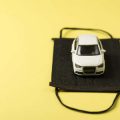Understanding How Your Car Battery Works
Your car battery is the heart of your vehicle’s electrical system. It provides the power needed to start your engine and keeps essential electronics running, from headlights to the radio. Over time, even the best batteries can lose their strength. Signs that your battery might be getting weak include slow engine cranking, dimming headlights, or needing to jump-start your car more often than usual. Ignoring these signs can leave you stranded at the worst possible moment. That’s why taking care of your car battery isn’t just a good idea—it’s essential for keeping your vehicle reliable and safe on the road.
2. Regular Inspection and Cleaning
Keeping your car battery in top shape starts with regular inspection and cleaning. Not only does this help you catch issues early, but it can also extend your battery’s life and ensure your vehicle starts reliably—no matter the season. Here’s a practical, step-by-step guide for American drivers to follow:
Step-by-Step Battery Maintenance
- Turn Off Your Vehicle: Make sure your engine is off and the keys are out of the ignition before working on the battery.
- Inspect the Battery Case: Look for cracks, bulges, or leaks. Any visible damage means it’s time to replace the battery.
- Check for Corrosion: White, ashy deposits on terminals are signs of corrosion, which can weaken connections.
- Tighten Connections: Use a wrench to gently tighten any loose cable clamps. Don’t overtighten, as that could damage the terminals.
- Clean the Terminals: Mix baking soda with water and use an old toothbrush to scrub away corrosion. Rinse with clean water and dry thoroughly.
- Apply Terminal Protector: A thin layer of petroleum jelly or commercial terminal spray can help prevent future corrosion.
- Reattach and Test: Reconnect cables (positive first), make sure everything is secure, then start your car to check that it runs smoothly.
Quick Reference: Battery Maintenance Checklist
| Task | Frequency | Tools Needed |
|---|---|---|
| Visual Inspection | Once a month | None |
| Check & Tighten Connections | Every 3 months | Wrench |
| Clean Terminals | If corrosion is visible/Every 6 months | Baking soda, water, toothbrush, rag |
| Apply Terminal Protector | After every cleaning | Petroleum jelly or spray |
Pro Tip for American Drivers:
If you live in areas with extreme temperatures (like Arizona summers or Midwest winters), check your battery more often. Heat and cold can both shorten battery life.

3. Best Practices for Charging and Driving Habits
When it comes to extending your car batterys life, your everyday driving habits make a big difference. Many people dont realize that short trips—especially those less than 20 minutes—can actually drain your battery over time. That’s because your alternator needs enough time to fully recharge the battery after starting the engine. If you’re always running quick errands or just driving around the block, your battery may never get the full charge it needs.
Tip #1: Avoid Frequent Short Trips
If possible, try to combine errands so you drive longer distances each time you start your car. This gives your alternator a chance to recharge the battery properly, which helps prevent early battery failure.
Tip #2: Cut Down on Idling
Letting your car idle for long periods is not only bad for the environment—it can also put unnecessary strain on your battery. Modern cars don’t need to warm up before driving, so once you start your engine, it’s best to get moving instead of waiting in park.
Tip #3: Regularly Take Longer Drives
Make it a habit to take your car out for a 20-30 minute drive at highway speeds every week or two if you usually stick to short city drives. This ensures that your battery gets fully charged and stays healthy, especially if you have an older vehicle or one that sits for days at a time.
By following these simple charging and driving habits, you’ll help maximize the lifespan of your car battery and avoid unexpected breakdowns. A little attention now saves you hassle (and money) later on!
4. Protecting Your Battery from Extreme Weather
Both scorching summers and freezing winters can take a serious toll on your car battery, making weather protection crucial for American drivers. Here are some practical tips to help your battery survive the country’s notorious temperature swings:
Weather Hazards and Their Effects on Car Batteries
| Weather Condition | Common Issues | Prevention Tips |
|---|---|---|
| Hot Summers | Fluid evaporation, increased corrosion, weakened charge | Park in shade or garages, check fluid levels, clean terminals |
| Cold Winters | Reduced cranking power, thickened engine oil, slow starts | Use battery blankets or insulators, keep battery fully charged, test battery before winter |
Simple Strategies to Shield Your Battery
- Park Smart: During summer, always try to park in a garage or shaded spot. In winter, avoid parking outside overnight if possible.
- Batteries Need Insulation: Consider using a thermal battery blanket during harsh winters—these are inexpensive and widely available at auto stores across the U.S.
- Regular Charging: Extreme temperatures can sap your battery’s charge. Use a trickle charger if you don’t drive often, especially in winter months.
Proactive Checks Make a Difference
If you live in areas known for temperature extremes (think Arizona summers or Minnesota winters), get your battery tested at the start of each season. Many auto parts stores offer free battery checks—take advantage of these local resources to catch issues early and avoid getting stranded.
5. Knowing When to Replace Your Battery
Even with the best care, every car battery has a limited lifespan. So how do you know when it’s time to stop maintaining and start shopping for a new one? Here are some practical signs that your battery might be on its last legs:
Slow Engine Crank
If your engine is slow to start or you notice a sluggish crank when turning the key, it’s often a clear indicator that your battery is losing power. Don’t ignore these early warning signs—they’re your car’s way of telling you something isn’t right.
Dashboard Warning Light
Most modern vehicles have a dashboard light that signals battery or charging system issues. If this light comes on, it’s time to get your battery and electrical system checked out by a professional.
Corrosion and Swelling
Visible corrosion around the terminals or swelling of the battery case are red flags. These issues can point to internal damage or leaks, making continued maintenance ineffective and potentially unsafe.
Frequent Jump Starts
If you find yourself needing to jump-start your car more than once in a short period, your battery probably can’t hold a charge anymore. At this point, replacing the battery is usually more practical than trying to revive it.
Age Matters
In general, car batteries in the U.S. last between three and five years. If yours is approaching or past this range, it’s smart to proactively shop for a replacement rather than risk being stranded.
The Bottom Line
No matter how diligent you are with maintenance, all batteries eventually wear out. Recognizing when yours is beyond saving can save you from unexpected breakdowns and extra hassle. When in doubt, consult your trusted mechanic or local auto parts store—they’ll help you pick the right replacement and keep your vehicle running smoothly.


